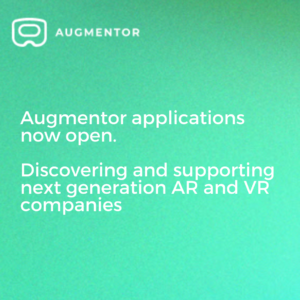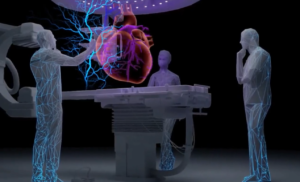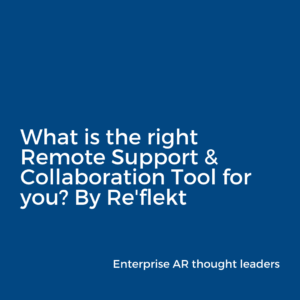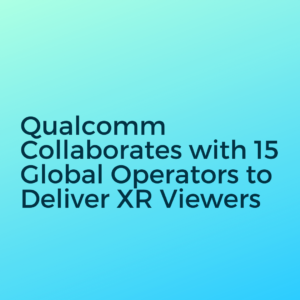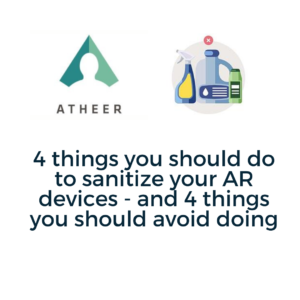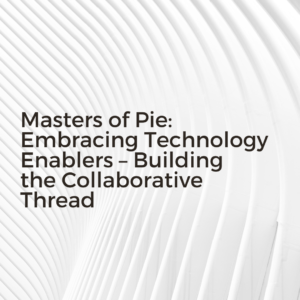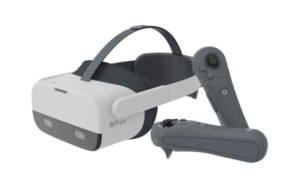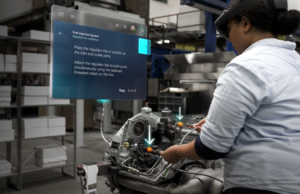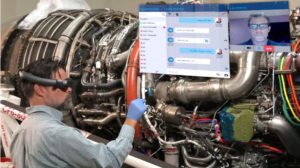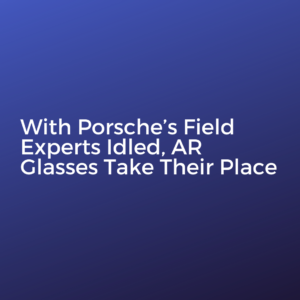“Due to the coronavirus pandemic all forms of telecommunications are more important than ever. We use our brains more effectively when we feel more proximity while communicating with a person that is not in the same room ,” said Alexander Lautz, SVP of 5G, Deutsche Telekom . “ However, today’s mass market tools – telephony, messaging, document sharing, video calling – lack the level of immersion needed by themselves. XR technology enablers are crucial to enhancing telecommunications services to offer digital social proximity. Deutsche Telekom is proud to sponsor the Global Resource Guide to XR Collaboration which educates us all on what is possible already today .”
XR Collaboration Platform Directory
Included in the updates to the site is a robust search tool categorizing the feature sets and capabilities of each XR platform, including the primary industry they support. Each of the 70+ XR Collaboration platforms host a profile about their solution.
Accessibility Considerations
XR Access joined the coalition providing content supporting Accessibility in the Global Resource Guide highlighting XR collaboration considerations before implementation into business and education systems. Governments and organisations will be able to use this resource to support digital implementation for those with disabilities remotely working and learning from home.
Audio Podcast Release
Supporting accessibility, XR Collaboration released the audio podcast of the Global
Resource Guide narrated by Alan Smithson, Host of the XR For Business Podcast. The recordings are available on Apple Podcast , Spotify , and Google Play .
Importance of Presence
The PDF Resource Guide introduces the importance of human connectivity through
digital presence & audio podcast contribution by Caitlin Krause , MindWise Learning,
Leadership & Wellbeing Specialist. The recordings are available on Apple Podcast ,
Spotify , and Google Play
Please visit the website XRCollaboration.com where the XR Collaboration PDF
Resource Guide & Platform Directory will be periodically updated.
Current Version 4 – May 28, 2020
About The Coalition
ABOUT XR IGNITE INC
XR Ignite is a community hub and virtual accelerator for XR startups, studios, and developers to connect
with customers who want to solve large business challenges.
ABOUT DEUTSCHE TELEKOM
Deutsche Telekom is one of the world’s leading integrated telecommunications companies, with some
184 million mobile customers, 27,5 million fixed-network lines, and 21 million broadband lines. Leading in customer experience, leading in technology, and leading in business productivity and pioneering sustainability.
ABOUT QUALCOMM TECHNOLOGIES
Qualcomm is the world’s leading wireless technology innovator and the driving force behind the
development, launch, and expansion of 5G. Qualcomm Incorporated includes licensing business, QTL, and the vast majority of the patented portfolio. Qualcomm Technologies, Inc., a subsidiary of Qualcomm Incorporated, operates, along with its subsidiaries, substantially all of our engineering, research and development functions, and substantially all of their products and services businesses, including our QCT semiconductor business.
ABOUT METAVRSE INC
MetaVRse hosts a suite of tools including 3D Web Engine for business & education and offering custom VR/AR development and professional services supporting the democratization of education.
ABOUT POWERSIMPLE, LLC
Building innovative web solutions since the ‘90s, Powersimple is focused on powering WebXR, the Spatial Web, Social VR and Volumetric Content with data for Events, Journalism Advertising, Education and Civics.
ABOUT THE AREA
The Augmented Reality for Enterprise Alliance ( AREA ) is the only global non-profit, member-based organization dedicated to widespread adoption of interoperable AR-enabled enterprise systems.
ABOUT XR BOOTCAMP & VR FIRST
VR First has successfully democratized VR/AR. at the intersection of industry and academia, VR First has seen the needs of the industry and decided to move forward with XR Bootcamp , striving to move the whole XR industry forward, equipping it with the talents they need to develop the most immersive VR/AR content.
ABOUT THE VRARA
The VR/AR Association ( VRARA ) is an international organization designed to foster collaboration between innovative companies and brands in the VR and AR ecosystem.
ABOUT AWE
Augmented World Expo (AWE) is the leading AR/VR event series in the world. AWE hosts four annual events (Silicon Valley, Munich, Asia, Tel Aviv) and has meetup chapters all over the world. Their mission is advancing Augmented Reality to Advance Humanity. Our Goal: 1 billion active users of AR by 2020.
ABOUT XR ACCESS
The XR Access Initiative is supported by Cornell Tech, Verizon Media, and the Partnership on Employment & Accessible Technology (PEAT).
